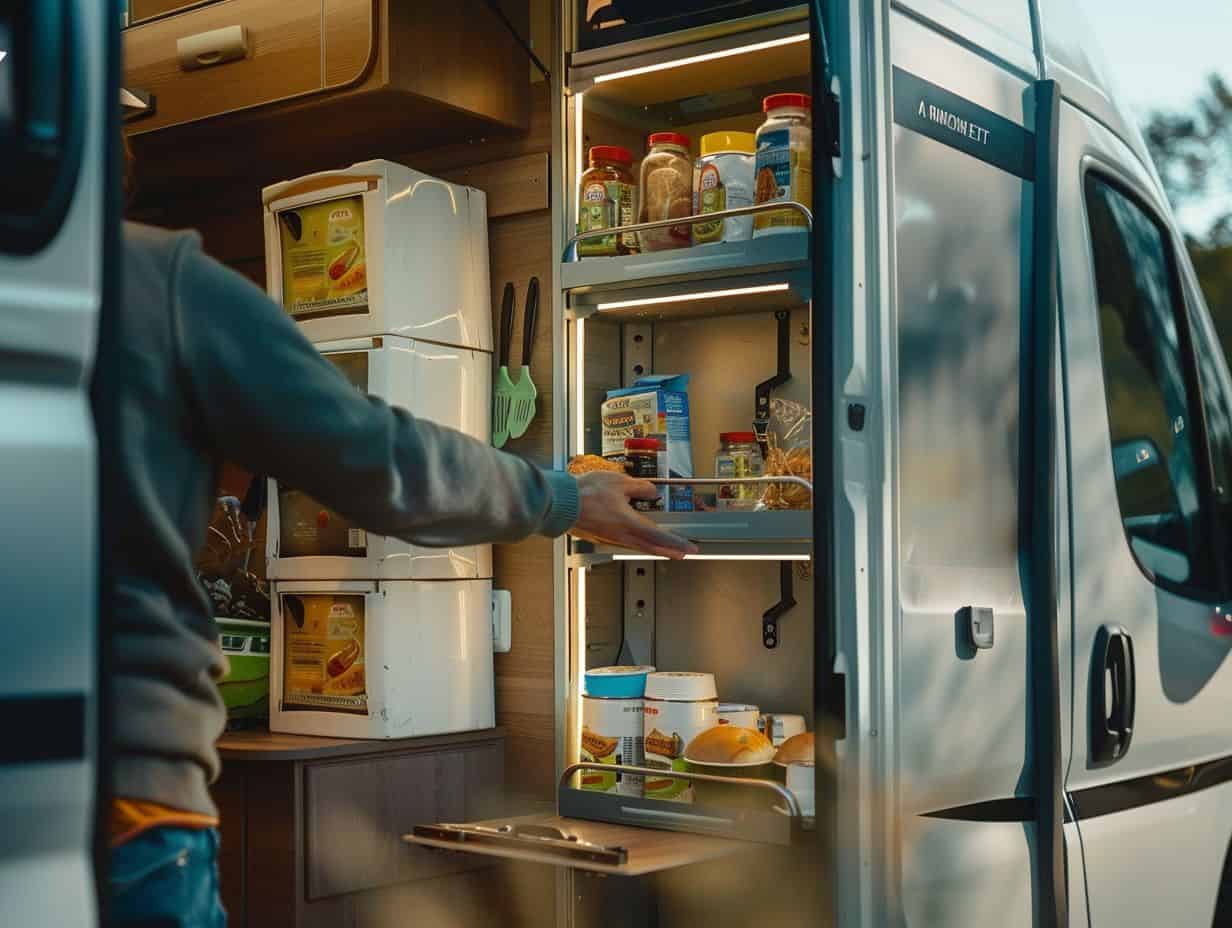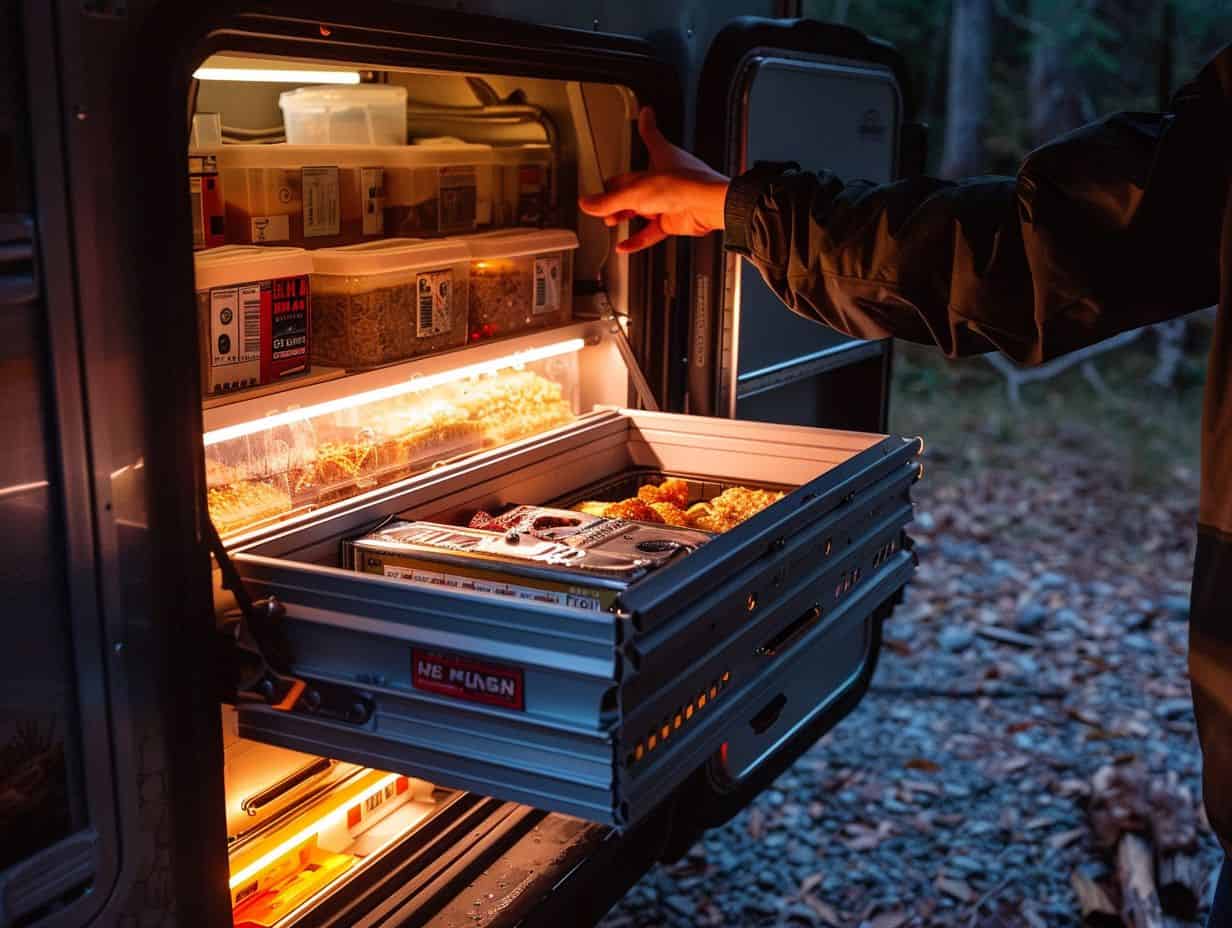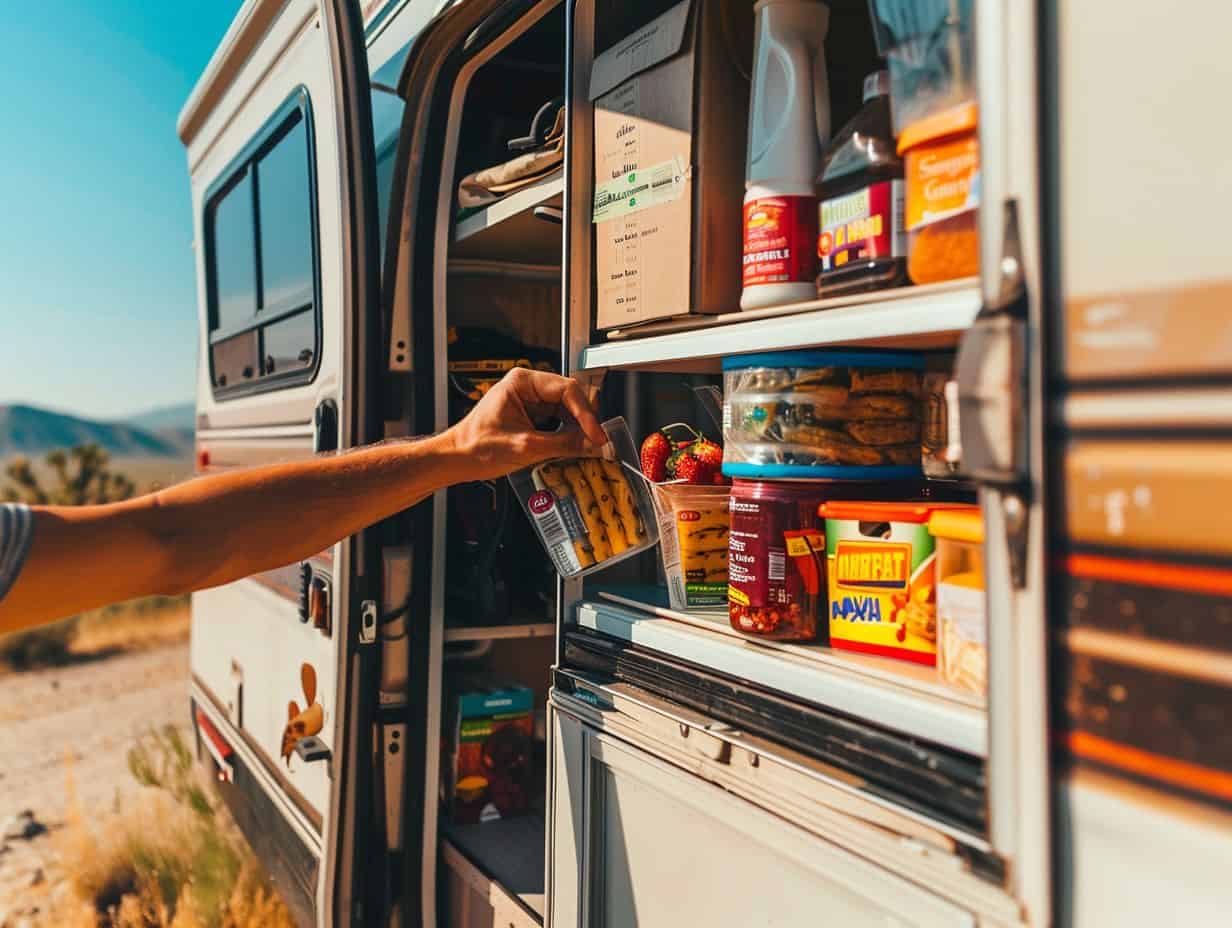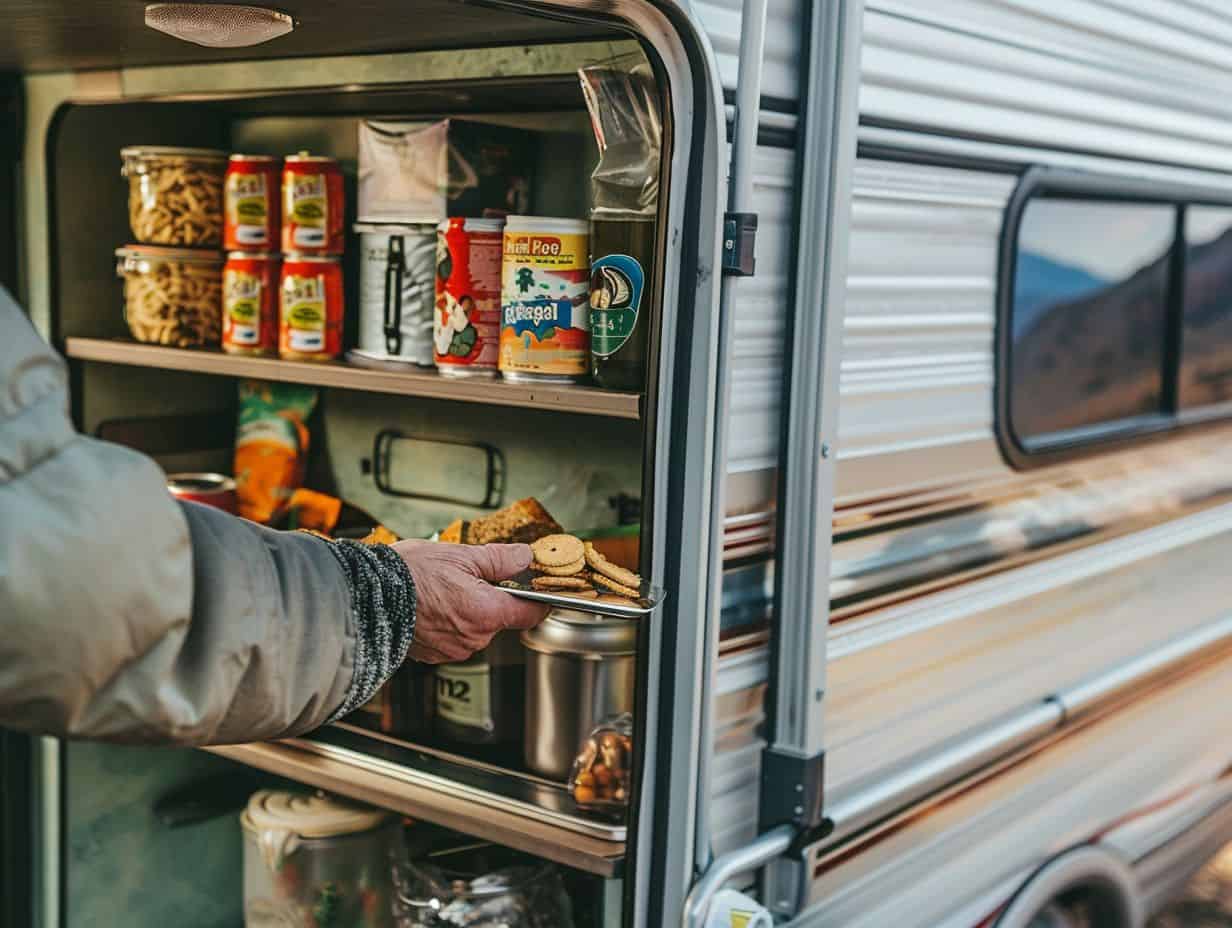Travelers or explorers seeking a convenient and reliable food option on their adventures may want to consider MREs (Meals Ready-to-Eat). With their long shelf life, nutritional value, and variety of options, MREs have become a popular choice for those on the go.
This article will explore why MREs are favored by travelers and how they compare to other camping foods. It will also discuss the different types of MREs available and provide tips on how to properly store and prepare them.
It is important to consider the potential risks and concerns associated with consuming MREs, such as their high sodium content and limited fresh ingredients. Therefore, exploring the world of MREs as the ultimate convenience food for travelers and explorers can provide valuable insights.
Why Are MREs Popular Among Travelers and Explorers?
MREs, or Meal, Ready-to-Eat, are popular among travelers and explorers because of their convenience, portability, and immediate availability. These meals are designed for adventurous journeys or exploring remote locations, providing a quick and easy dining option on the move.
Their lightweight packaging makes them suitable for hikers, campers, and individuals on long flights, ensuring that sustenance is always easily accessible. With various flavors and nutritional contents packed into a compact form, MREs cater to different preferences and dietary needs, removing the necessity to search for food establishments in unfamiliar areas.
Whether trekking through mountains or going on a road trip, MREs offer a dependable source of nourishment, allowing individuals to concentrate more on their explorations and less on meal planning.
1. Convenience
The convenience of MREs makes them a popular choice for travelers and explorers looking for quick and easy meal solutions during camping trips or on-the-go adventures.
With MREs, individuals do not have to worry about carrying heavy cooking equipment or spending time preparing meals while they could be exploring nature. These portable meals are designed to be ready-to-eat with minimal effort, allowing individuals to focus on their journey without compromising on nutrition.
Whether hiking in the mountains, on a road trip, or camping under the stars, MREs provide a convenient way to enjoy a satisfying meal anytime, anywhere.
2. Long Shelf Life
One of the key advantages of Meals, Ready-to-Eat (MREs) is their long shelf life, making them ideal for emergency preparedness and situations where durable, shelf-stable food is necessary for extended periods of storage.
These ready-to-eat meals are specifically designed to withstand harsh environments and maintain their quality over time. With a careful selection of ingredients and packaging techniques, MREs can be stored for years without compromising taste or nutritional value. This durability ensures that individuals or organizations stocking up on MREs for emergency situations can rely on them for sustenance well into the future.
Their convenience, portability, and extended shelf life make MREs a practical choice for emergency kits, outdoor activities, and situations where access to fresh food is limited.
3. Nutritional Value
MREs offer essential nutritional value in a compact format, ensuring that travelers and explorers have access to necessary sustenance while on the go or during outdoor adventures.
These pre-packaged meals are comprised of a balanced combination of proteins, carbohydrates, and fats, providing the energy required for strenuous activities. With precisely calculated calorie content, MREs present a convenient solution for fueling the body during hikes, camping trips, or any outdoor outings.
The extended shelf life of MREs makes them a dependable choice for emergency situations or extended outdoor stays. Their easy preparation and lightweight design further enhance their appeal for individuals in need of quick and nourishing meals while on the move.
4. Variety of Options
MREs provide a range of options for adventurers and travelers, offering a selection of adventure foods and trail-friendly meals in compact packaging for easy transport.
These meals are available in various flavors and cuisines to cater to different tastes and preferences. Options range from traditional beef stew and chicken fajitas to vegetarian choices like pasta primavera, ensuring there is something for everyone in the world of MREs. Many MREs also include snacks and sides, such as crackers, nut mixes, and dessert bars, to round out the meal experience. This versatility makes MREs well-suited for long hikes, camping trips, or any outdoor activity where a convenient and satisfying meal is essential.
How Do MREs Compare to Other Camping Foods?
When comparing MREs to other camping foods, their portability, convenience, and wide range of snack options make them a preferred choice for campers and outdoor enthusiasts seeking quick and easy meal solutions.
Traditional camping foods often require more preparation time and can be bulky to carry, unlike MREs which come in compact packaging that can easily fit into a backpack or camping gear.
With MREs, campers have the advantage of enjoying a variety of snacks such as protein bars, trail mix, and energy gels, adding a tasty and diverse dimension to their camping cuisine. These features make MREs a practical and convenient option for those looking for hassle-free meal solutions while exploring the great outdoors.
1. Freeze-Dried Foods
Freeze-dried foods have become a popular option for adventurers and explorers undertaking expeditions or trail journeys as an alternative to MREs. These meals are lightweight and easy to transport, making them a favorable choice for hikers and campers who aim to minimize the weight they carry while ensuring they have sufficient sustenance during outdoor excursions.
The lightweight feature of freeze-dried meals appeals to outdoor enthusiasts seeking to fuel their bodies efficiently. These meals are compact and packed with essential nutrients necessary for endurance activities, making them a suitable companion for long hikes or journeys through challenging terrain. Adventure seekers value the convenience of freeze-dried foods due to their quick preparation, minimal storage requirements, and a range of appetizing options, enhancing their overall outdoor exploration experience.
2. Canned Foods

Canned foods, a traditional camping staple, lack the portability and convenience of MREs, making them less ideal for travelers and adventurers looking for compact and easy-to-carry meal solutions for wilderness excursions.
MREs, or Meals Ready-to-Eat, are specifically designed with the on-the-go lifestyle in mind, offering a lightweight and space-efficient alternative to the bulkier canned options.
Picture trekking through rugged terrain or setting up camp after a long day of outdoor activities; the last thing anyone wants is to be weighed down by heavy cans when compact, pre-packaged MREs can provide the sustenance needed right at their fingertips. These pre-portioned meals eliminate the need for additional cooking equipment, allowing individuals to enjoy a hot and satisfying meal anywhere their adventures take them.
3. Homemade Meals
Although homemade meals offer a personalized touch, they often require extensive preparation and cooking equipment, making them less practical for travelers and explorers seeking quick and convenient dining solutions while on the go.
On the other hand, MREs (Meals Ready-to-Eat) provide outdoor enthusiasts with a hassle-free alternative that eliminates the need for carrying bulky cooking gear and spending valuable time preparing meals. These compact, lightweight packages contain pre-cooked and ready-to-eat foods that only require a simple heating process or can be consumed cold, making them ideal for camping, hiking, and other outdoor activities. The convenience of MREs allows adventurers to focus more on enjoying their surroundings and less on meal preparation logistics.
What Are the Different Types of MREs Available?
There are various types of MREs available to cater to different needs and preferences, including military rations designed for armed forces, civilian MREs for general consumers, and specialized vehicle meals for nomads and travelers.
Military MREs play a crucial role in providing sustenance to soldiers during missions, with high-calorie, long-lasting options to fuel them in the field. On the other hand, civilian MREs offer a more diverse range of flavors and ingredient combinations, catering to a wider audience beyond the military. Specialized vehicle meals, favored by survivalists and adventurous explorers, are compact, lightweight, and easy to prepare, making them ideal for those on the move or in remote locations. These different categories of MREs showcase the versatility and adaptability of survivalist meals, meeting the needs of various consumer segments.
1. Military MREs
Military MREs are designed to meet the nutritional and energy needs of armed forces during expeditions, focusing on providing sustenance for troops in different operational environments.
These Meal, Ready-to-Eat packages are created to be compact, lightweight, and durable, making them suitable for easy transport and consumption on the go, whether in vehicles, aircraft, or during ground operations. The primary objective of military MREs is to ensure that troops have access to a dependable source of sustenance even in challenging circumstances. They contain a variety of food items, snacks, and beverages to offer a well-rounded meal that can fuel soldiers during long missions and unpredictable situations.
2. Civilian MREs
Civilian MREs provide convenient and efficient dining options for non-military consumers, offering portable dining solutions for travelers, campers, and individuals needing quick sustenance during their travels.
These pre-packaged meals are crafted to be lightweight and easy to transport, making them well-suited for road trips, hiking trips, or any situation where traditional dining choices may be scarce. With a range of menu selections and a lengthy shelf life, civilian MREs are not just practical but also nutritious, ensuring that individuals can enjoy a hearty meal even in remote areas.
Whether someone is exploring the outdoors or simply seeking a hassle-free dining solution, civilian MREs are a dependable option for satisfying hunger while on the go.
3. Kosher MREs
Kosher MREs are designed to adhere to strict dietary guidelines for individuals following kosher laws. They serve as a reliable option for off-grid dining, survival situations, and addressing hunger needs in alignment with kosher dietary requirements.
These ready-to-eat meals are known for their convenience and can be a crucial resource in emergency situations where traditional food sources are scarce. The certification process guarantees that all components of the meal meet rigorous kosher standards, providing assurance to individuals who require nourishment while adhering to their religious beliefs.
Offering a range of options from breakfast to dinner, Kosher MREs provide versatility and peace of mind for those seeking kosher-compliant sustenance in challenging environments.
4. Vegetarian MREs
Vegetarian MREs are designed for individuals who adhere to a plant-based diet, serving as emergency food options, providing nutritional support for expeditions, and offering exploration cuisine for vegetarians going on outdoor trips.
These ready-to-eat meals are not only convenient but also contain essential nutrients necessary to maintain energy levels during challenging expeditions. Vegetarian MREs offer a range of flavorful choices that support a well-rounded diet for individuals following plant-based lifestyles, making them a suitable option for adventurers looking for hearty and nourishing meals on-the-go.
The compact and lightweight design of vegetarian MREs makes them easy to carry in backpacks or in situations where space is limited, ensuring that explorers can enjoy tasty and satisfying meals no matter where their journey leads.
How to Properly Store and Prepare MREs?

Ensuring the proper storage and preparation of MREs is crucial for maintaining food supplies during travels and expeditions. Knowing how to store and heat MREs correctly is a fundamental aspect of travel necessities for adventurers.
Proper storage of MREs involves keeping them in a cool, dry place away from direct sunlight or extreme temperatures. Before embarking on any adventure, it’s important to check the expiration dates on the MRE packages to ensure their freshness. Regarding heating MREs, one can utilize the included flameless ration heaters or choose to use boiling water to warm up the meals. These simple yet essential steps can have a significant impact on ensuring a reliable source of sustenance while on the go.
1. Storing MREs
Proper storage of MREs is essential for preserving the quality and longevity of these compact meals, ensuring that individuals have reliable food options during their expeditions and outdoor activities.
One critical aspect of maintaining MREs is storing them in cool, dry locations away from direct sunlight and moisture. Extreme temperatures can compromise the ingredients and shorten the shelf life. It is also advisable to regularly rotate your stockpile, consuming the oldest MREs first to maintain freshness. Consider using airtight containers or sealed bags to provide additional protection for the meals. This practice helps prevent contamination and keeps out pests that could spoil the food. By adhering to these storage guidelines, you can enjoy a variety of high-quality and nutritious meal options during your next adventure.
2. Heating MREs
Heating MREs effectively ensures that adventurers can enjoy instant meals with minimal preparation, making them an essential part of vehicle dining setups and adventure provisions for travelers on the go.
One quick and efficient method for heating MREs is to utilize portable flameless ration heaters. These compact devices require only a small amount of water to activate, providing a hassle-free way to warm up meals in a matter of minutes. Adventurers can also consider using a camping stove or portable grill for heating MREs if they prefer a more traditional method. By being creative with heating solutions, travelers can enhance the flavor and overall dining experience of their adventure provisions.
3. Adding Flavors to MREs
Improving the taste of MREs can enhance the dining experience during RV trips and exploration journeys, offering a convenient and nutritious option for adventurers in need of compact nutrition and exploration provisions.
By incorporating straightforward yet impactful ingredients such as hot sauce, dehydrated herbs, or individual squeeze packets of lemon or lime juice, one can turn plain MRE meals into flavorful dishes. Utilizing small condiment packets of mustard, ketchup, or mayo can add a familiar flavor to on-the-go meals. Experimenting with different spice blends or seasoning mixes can further diversify taste profiles and keep meals interesting throughout extended RV trips or outdoor excursions.
Are There Any Risks or Concerns with Consuming MREs?
While MREs are important emergency food sources, it is crucial to consider the potential risks associated with their consumption, such as high sodium content and allergens that may affect individuals with specific dietary restrictions.
Excessive sodium intake can result in issues like bloating and high blood pressure, impacting long-term health. Navigating MREs can be challenging for those with allergies or intolerances due to the range of ingredients they contain.
To reduce these risks, it is recommended to carefully review labels for allergens and choose low-sodium options when available. Awareness of these concerns enables individuals to make informed choices when stocking up on emergency food supplies.
1. High Sodium Content
The high sodium content in some MREs can present health risks, particularly for individuals with dietary restrictions or those looking for convenient nutrition. It is important to be mindful of sodium intake when using MREs as survivalist meals or emergency food sources.
Excessive sodium consumption can contribute to high blood pressure, a risk factor for heart disease and stroke. To regulate sodium levels in MREs, consider selecting options that are labeled as low-sodium or sodium-free. Incorporating fresh fruits and vegetables into MRE meals can help counterbalance the sodium content while supplying essential vitamins and minerals.
Carefully checking nutritional labels and opting for MREs with reduced sodium content can assist in maintaining a healthy diet, ensuring that your emergency food supplies meet your nutritional requirements without jeopardizing your health.
2. Limited Fresh Ingredients
MREs may have limited fresh ingredients because of their extended shelf life and preservation methods, which can impact the overall nutritional quality of these convenient meals.
Incorporating fresh elements like fruits, vegetables, or herbs alongside MREs can significantly enhance the nutritional value and contribute appealing flavors. Portable options such as pre-cut produce, dried fruits, or travel-friendly packets of nuts can easily complement MREs without compromising convenience.
Considering dehydrated ingredients or vacuum-sealed pouches for certain items can help maintain freshness while extending the shelf life, providing more diversity to the standard MRE offerings. By creatively combining fresh components with MREs, individuals can enjoy a more balanced and satisfying on-the-go dining experience.
3. Potential for Allergens

People with food allergies should exercise caution when consuming MREs, as there is a possibility of allergens being present in these survivalist meals and travel snacks. Being aware of allergen risks and having appropriate hunger solutions in place is important for safe dining during expeditions.
Cross-contamination could happen during the preparation or packaging of MREs, underscoring the need for individuals with allergies to carefully check labels and ingredient lists. Common allergens like nuts, dairy, soy, and gluten may be concealed in these compact meals.
Choosing MREs labeled as allergen-free or making homemade travel snacks using familiar ingredients can lower the chances of accidental exposure. It is always advisable to consult a medical professional before embarking on outdoor activities in areas where access to specialized medical care may be limited.
Frequently Asked Questions
What are MREs and how do they work as convenience food for travelers and explorers?
MREs, or Meals Ready-to-Eat, are military-style packaged meals that are designed to provide a full meal in a single package. They typically consist of a main course, side dishes, snacks, and a dessert, as well as utensils and heating elements. MREs are compact, long-lasting, and require no refrigeration, making them the perfect choice for travelers and explorers who need a quick and easy meal on the go.
Are MREs suitable for all types of recreational vehicles?
Yes, MREs are suitable for all types of recreational vehicles, including RVs, campervans, trailers, and even tents. They are lightweight and compact, making them easy to pack and store in any vehicle. Plus, the packaging is designed to withstand rough conditions, making them a reliable choice for any type of outdoor adventure.
Do MREs have a long shelf life?
Yes, MREs have a shelf life of 3-5 years, making them a great option for stocking up on convenience food for future travels. They are also designed to withstand extreme temperatures, so you won’t have to worry about them spoiling in hot or cold weather.
Can MREs be heated without a stove or microwave?
Yes, MREs come with a heating element that only requires a small amount of water to activate. This means you can easily heat your meal without the need for a stove or microwave, making them ideal for camping or other outdoor activities.
Are there any dietary restrictions when it comes to MREs?
Most MREs are designed to provide a balanced meal with a variety of options, including vegetarian and halal choices. However, it is always important to check the ingredients list for any potential allergens or dietary restrictions before consuming an MRE.
Where can I purchase MREs for my next RV trip?
MREs can be purchased online or at many camping supply stores. You can also find them at military surplus stores or through local distributors. Be sure to read reviews and compare prices to find the best option for your needs and budget.


